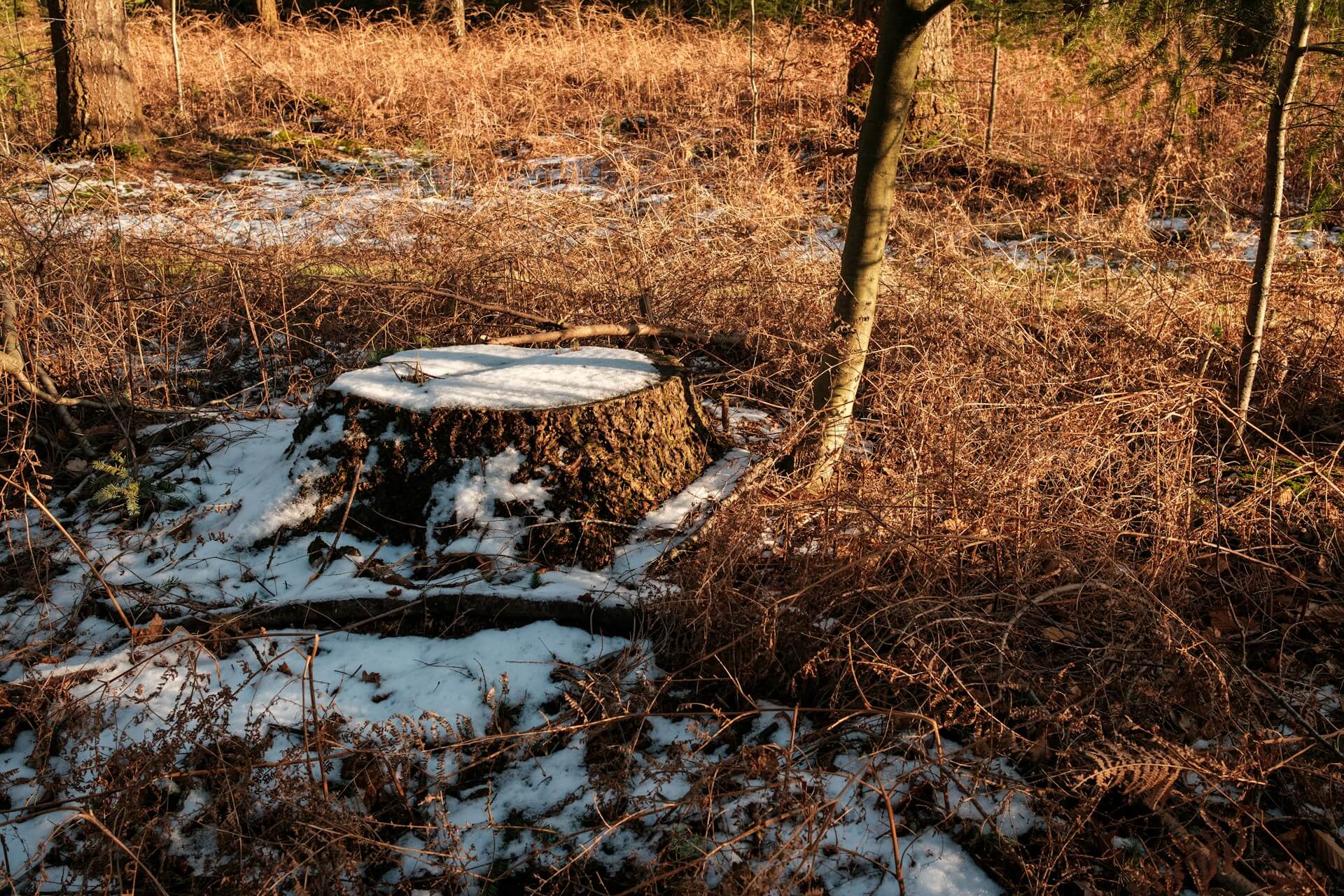Trees are valuable assets to any property, providing beauty, shade, and environmental benefits. However, like any living organism, trees can encounter health problems that may not always be visible.
Regular tree inspections are crucial for ensuring the health, safety, and longevity of the trees on your property. In Sunderland, where weather conditions can vary and urban growth can put stress on trees, professional tree inspections can help identify issues before they become hazardous.
In this guide, we’ll cover what tree inspections involve, why they’re essential, the signs that your tree may need an inspection, and how much a tree inspection costs in Sunderland.
What is a Tree Inspection?
A tree inspection is a thorough examination of a tree’s health, structure, and stability by a trained tree surgeon or arborist. The inspection is designed to identify any potential risks, such as diseases, structural weaknesses, or pest infestations, and recommend solutions to maintain the tree’s health and safety.
Tree inspections typically involve:
- Assessing the tree’s overall health: This includes checking for signs of disease, decay, or nutrient deficiencies.
- Evaluating the tree’s structure: Inspecting the trunk, branches, and root system for any weaknesses or damage that could pose a risk.
- Checking for pests: Identifying any insect infestations or fungal growths that could harm the tree.
- Assessing environmental factors: Reviewing the tree’s location, including proximity to buildings, power lines, or other structures that could be affected if the tree becomes unstable.
The goal of a tree inspection is to ensure that your tree is healthy and poses no safety risks to people or property. If any issues are found, the arborist can recommend treatments, pruning, or, in severe cases, tree removal to mitigate the risk.
Why Tree Inspections Are Important
Regular tree inspections are essential for several reasons:
1. Safety
One of the most important reasons for a tree inspection is safety. Trees that are structurally compromised can fall unexpectedly, causing damage to property or injury to people. Regular inspections help to identify weak branches, cracks, or root problems that could lead to tree failure, allowing you to address issues before they become dangerous.
2. Disease Detection
Trees can suffer from a variety of diseases, many of which may not be immediately visible. Fungal infections, rot, and pests can all affect the health of a tree, leading to structural weakness or death if not treated. During a tree inspection, an arborist will look for signs of disease and recommend appropriate treatments to prevent the issue from spreading.
3. Long-Term Tree Health
Just like humans, trees benefit from regular check-ups to ensure they stay healthy. A tree inspection allows you to monitor your tree’s growth and health over time. This proactive approach helps to identify nutrient deficiencies, soil problems, or environmental stressors that could affect the tree’s long-term wellbeing.
4. Legal Compliance
In some cases, trees are subject to local regulations or Tree Preservation Orders (TPOs), which protect them from being pruned or removed without permission. A professional tree inspection ensures that your tree management practices comply with these regulations, helping you avoid fines or legal issues.
5. Property Value
Healthy, well-maintained trees add value to your property. Regular inspections ensure that your trees remain strong, healthy, and aesthetically pleasing, enhancing the overall appeal of your landscape.
Signs Your Tree Needs an Inspection
While regular tree inspections are recommended, there are certain situations where an immediate inspection is necessary. Here are some signs that your tree may need professional attention:
1. Cracks or Splits in the Trunk
Visible cracks or splits in the trunk are signs of structural weakness and may indicate that the tree is at risk of breaking or falling. This is especially concerning for large trees or those located near buildings or walkways.
2. Dead or Dying Branches
Dead or dying branches, also known as deadwood, can fall unexpectedly, posing a safety hazard. If you notice branches that are dry, brittle, or without leaves, it’s essential to have the tree inspected.
3. Leaning Trees
A tree that is suddenly leaning or tilting may have root or structural problems. This is particularly dangerous if the tree is leaning toward a building, power lines, or a busy road.
4. Fungal Growth
Fungal growth, such as mushrooms or conks at the base of the tree, can indicate internal decay. Fungi thrive on decaying wood, so their presence may suggest that the tree is rotting from the inside out.
5. Pest Infestation
Certain pests, such as beetles, caterpillars, or aphids, can cause significant damage to trees. If you notice an unusual number of insects on your tree or signs of chewing, boring, or sap leakage, it’s time for an inspection.
6. Excessive Leaf Drop
If a tree is losing more leaves than usual, especially outside of its normal shedding season, this could be a sign of stress, disease, or nutrient deficiency. An inspection can help determine the underlying cause and prevent further damage.
The Tree Inspection Process
When you hire a professional arborist to conduct a tree inspection, here’s what you can expect:
1. Visual Examination
The first step in a tree inspection is a thorough visual examination of the tree. The arborist will look for any obvious signs of damage, disease, or structural weakness, such as cracks, deadwood, or fungal growth.
2. Structural Assessment
Next, the arborist will assess the tree’s structure, including the branches, trunk, and root system. They will check for issues such as leaning, cracks, or hollows in the trunk that could indicate internal decay or structural instability.
3. Root and Soil Examination
The health of a tree’s roots is critical to its overall stability. During the inspection, the arborist will examine the soil around the tree’s base to check for signs of root rot, compaction, or other issues that could affect the tree’s stability.
4. Pest and Disease Check
The arborist will also check for signs of pests or diseases, including visible insect activity, fungal growth, or unusual leaf or bark patterns. If any pests or diseases are identified, the arborist will recommend treatment options to prevent the problem from spreading.
5. Recommendations
Once the inspection is complete, the arborist will provide a detailed report of their findings. If any issues are identified, they will recommend treatments or actions, such as pruning, disease control, or, in extreme cases, tree removal.
How Much Does a Tree Inspection Cost in Sunderland?
The cost of a tree inspection in Sunderland can vary depending on the size of the tree, the complexity of the inspection, and whether additional services are required. Here’s a general breakdown of what you can expect to pay for a tree inspection:
Standard Tree Inspection
For a standard tree inspection, where the arborist assesses the tree’s health, structure, and safety, costs typically range from £50 to £150 per tree. This includes a detailed report and recommendations for further action, if necessary.
Multiple Trees or Larger Trees
If you have multiple trees on your property or particularly large trees, the cost of the inspection may increase. For multiple trees, many tree surgeons offer discounts for inspecting several trees at once. Inspections for larger trees, which may require more time and specialised equipment, can range from £150 to £300.
Additional Services
If the inspection reveals that your tree needs additional services, such as pruning, disease treatment, or pest control, these will be quoted separately. The cost of these services depends on the specific work required and the size of the tree.
Why Hire a Professional for Tree Inspections?
Tree inspections require a trained eye and a deep understanding of tree biology and structure. Here’s why you should always hire a professional arborist for your tree inspection needs:
- Expertise: Professional arborists have the knowledge and experience to identify subtle signs of disease, decay, or structural issues that may not be obvious to the untrained eye.
- Safety: Tree inspections often involve climbing trees or working at heights. Arborists are trained in safe climbing techniques and use specialised equipment to carry out inspections without putting themselves or your property at risk.
- Accurate Diagnosis: An experienced arborist can accurately diagnose tree health problems and recommend appropriate treatments to preserve the tree or remove hazards.
- Legal Compliance: If your tree is subject to a Tree Preservation Order (TPO), a professional arborist will ensure that all work complies with local regulations.
Conclusion: Protect Your Trees with Regular Inspections
Regular tree inspections are essential for maintaining the health, safety, and beauty of your trees. Whether you’re concerned about the condition of a single tree or managing a large property with multiple trees, professional tree inspections can help identify and address issues before they become serious problems.
If you’re in need of a tree inspection in Sunderland, contact us today to schedule an appointment with our team of qualified arborists. We’ll provide a comprehensive assessment of your trees and offer expert recommendations to ensure their long-term health and safety.
Get A Quick Quote
Please provide your contact details here, and we’ll get back to you shortly with a personalised quote.



